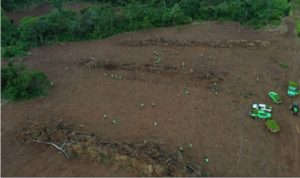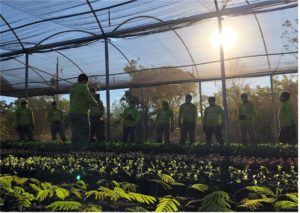Chapter Leader Interview: Uniting One World with 8 Billion Trees – The Fight on Climate Change
On November 26th, the United Nations is set to have its COP26 Climate Conference that will spotlight the important and urgent situation on global warming and climate change. COP26 is being held under the auspices of the UN in Glasgow, Scotland and all members countries are attending, realizing the urgency and severity of the subject. As well, the United Nations Association’s Northwest, MidPacific and Southern California Regions have joined together to present a groundbreaking forum in anticipation of the Climate Conference.
Amid the great attention and dire situations on global warming and climate change, it’s highly refreshing and comforting to recognize that there are many individuals, communities, and organizations that work tirelessly and eagerly to make even a small difference in this vast and challenging global issue.

The 8 Billion Trees is an organization that started from a stark awareness of the massive devastation of forests, particularly in the Amazon. This spurred that bold action must be taken to achieve the climate goals set by the United Nations. “If people can destroy the planet, they can work together to save it too,” Jon Chambers, founder, said.
With the goal to inspire and empower people towards climate change and global warming, the 8 Billion Trees embodies this: “one tree for each person as the planet nears a population of eight billion,” Chambers shared. It signifies a beautiful realization that each person can truly make a difference even though at times we may feel hopeless and doubtful of our capabilities. Nevertheless, scientists’ remarks that we’re accelerating to the point where it’ll be a challenge to reverse or mitigate the environmental damage need to be addressed.

Studies show that planting trees has immense potential to address climate change. Trees are one of the excellent carbon removal technologies.
“Through photosynthesis, they pull carbon dioxide from the air, binding the carbon with sugars and storing it in the wood to create new branches and roots while simultaneously releasing oxygen into the air,” Chambers explained.

Moreover, 80% of plants and animals that live in a forest depend on tree habitats for survival. So, losing trees also result to disruption of ecosystems and animal displacements. Trees also play an important role in agriculture as well as combating hunger and poverty, which is the United Nation’s top Sustainable Development Goals.
“By driving water cycles and fighting soil erosion, trees enrich local ecosystems, making sustainable agriculture possible. Forests also provide a number of products ranging from foods like fruits, nuts, and berries to resources like biofuel, oils, and peat,” Chambers said. Given the immense value of trees, it’s encouraging to recognize that reforestation efforts are being done not just to reduce carbon emissions but also to build up ecosystems, restore habitats, protect animals, and curb poverty and world hunger.
Much of the reforestation projects are undoubtedly due to the support of people across the globe, whether it’d be direct or indirect engagement in conservation efforts. Through people’s empowerment, the 8 Billion Trees can plant more trees, rebuild even more habitats, and sequester even more carbon emissions, Chambers said.
Unfortunately, climate change is certainly a polarizing issue. There are people at odds with science and believe that such conservation and restoration efforts are not necessary. When opposing views collide, it’s vital to take the time to engage with everyone with an open mind and heart and to take the time to listen to others’ stories, struggles, and doubts. “Choosing to approach these situations with an open heart has allowed us to change perspectives and even shift some deniers into supporters,” Chambers said. Governments around the world have been tremendously supportive as well on expanding restoration projects, by allowing the organization to operate within their borders. The governments and environmental agencies of the Amazon, federal research institutes in Brazil, the forestry service of Kenya, and the landscape board responsible for restoration after Australia’s mass wildfires all have responded with open arms to 8 Billion Trees’ mission, Chambers said.
For governments that don’t have a strong priority for environmental preservation and restoration, the focus turns to local communities instead to get the job done. After all, one of the most meaningful experiences of taking on environmental projects is connecting with people from all walks of life and empowering communities all around the world. “Empowering others is at the forefront of everything we do because it’s the only way we can possibly reach our goals,” Chambers shared.

There’s so much to do for a planet that needs enormous improvement and with that, time is the biggest challenge for change. Reports from IPCC show how badly we’ve harmed the environment; therefore, massive and bold actions need to be implemented as quickly and efficiently as possible. However, time always seems scarce – something that everyone can likely relate to.
Despite the great environmental challenges the world faces, each day presents new opportunities. For 8 Billion Trees, we should never feel hopeless. Our choices and actions matter, and working together in a time of crisis is one of our biggest strengths. It is through this strength that we can change the world and heal our climate to create a sustainable, greener future for all.




